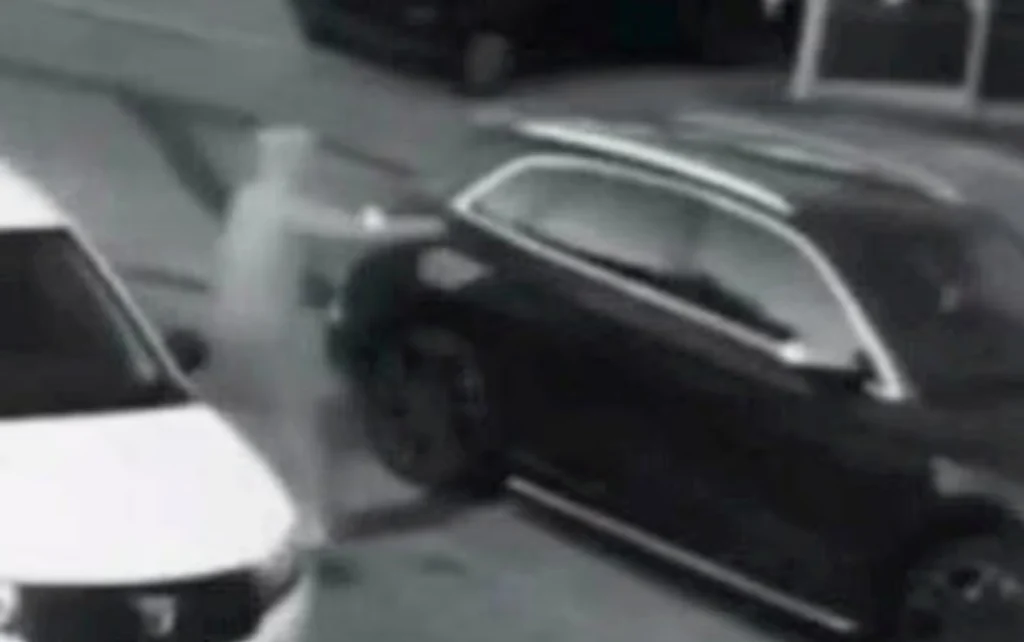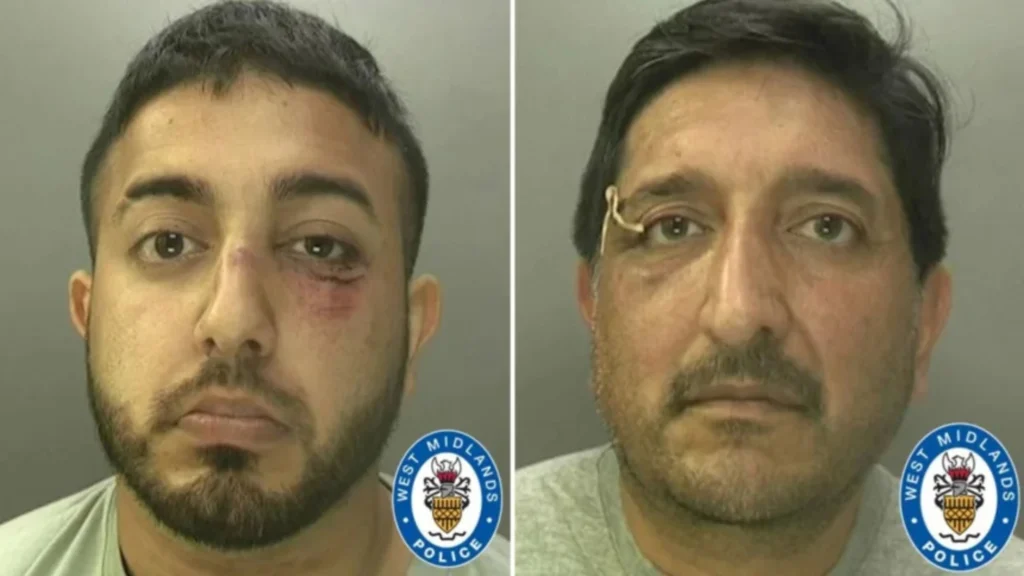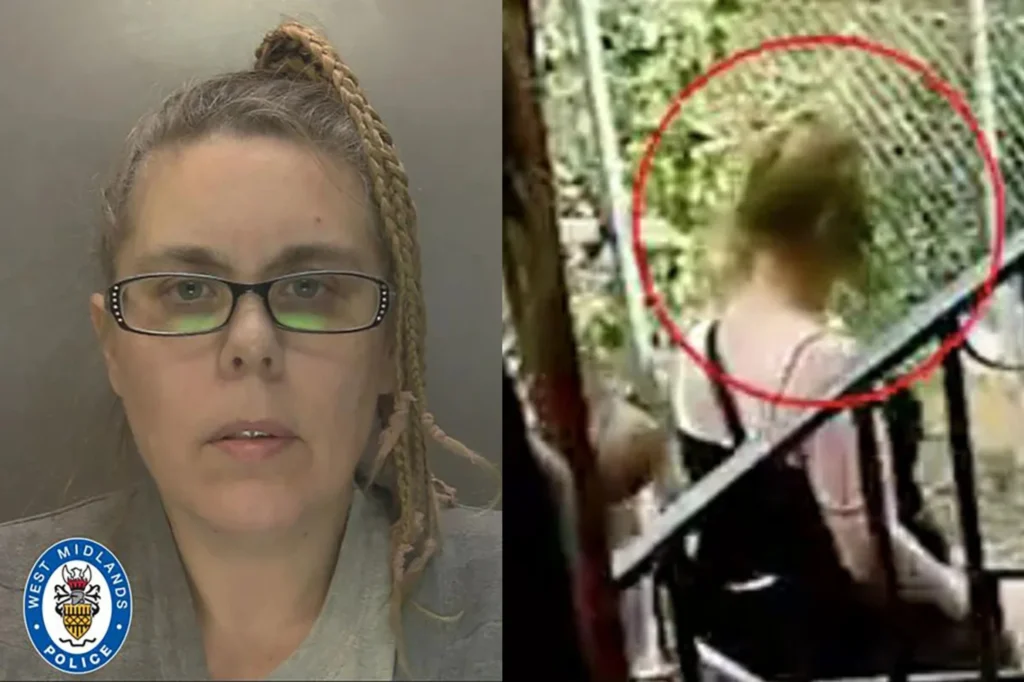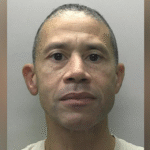In September 2019, a quiet Birmingham neighborhood turned into the scene of a failed hit job that felt ripped out of a movie script. At the center of it all was Aimee Jean Betro, an American woman from Wisconsin, who flew across the ocean to carry out a murder.
Disguised in a niqab, she walked up to her target, pointed a gun at his head… and the gun jammed. That moment not only saved Sikander Ali’s life but also kicked off one of the strangest international crime stories of the decade.
Betro’s name would soon be splashed across headlines.
From Small-Town Wisconsin
Aimee Jean Betro was born in Stevens Point, Wisconsin, on August 27, 1979. She had a pretty normal Midwestern upbringing, graduating high school in 1996 and studying graphic design and early childhood education.
After finishing her education in 2005, she bounced between low-paying jobs and eventually moved out of her hometown. By 2013, she had lost contact with most of her family.
In time, she landed a job as an administrator for the Milwaukee Brewers baseball team but her life wasn’t stable. That’s when she met Mohammed Nazir, an Englishman from Derby, through a dating app in 2018, The Week reports.
Their relationship moved quickly. Betro flew to Manchester in December that year to spend the holidays with him. When she returned to the U.S., she kept visiting the UK, including another trip in May 2019. That trip didn’t involve Nazir at all.
By then, Nazir and his father, Mohammed Aslam, were in deep trouble. They had gotten into a violent fight with Birmingham shop owner Aslat Mahumad over the price of a wedding suit.
Both men were injured in the July 2018 brawl and instead of moving on, they plotted revenge. Someone in Mahumad’s family had to die, they decided. Betro would become the person to pull the trigger.
A Plan That Fell Apart

Betro arrived in the UK on August 22, 2019. To anyone following her Instagram, she was just another tourist. She shared pictures of landmarks and tried to blend in.
Behind the scenes, she rented a Mercedes and met Nazir to prepare for the attack. On September 4, they even test-fired the gun she’d use for the job.
Three days later, dressed head-to-toe in a black niqab, Betro waited outside Mahumad’s house in Yardley, Birmingham. It was 8:10 p.m. when Sikander Ali, Mahumad’s son, pulled up in his SUV. She walked toward him, gun in hand and fired. The gun jammed.
Ali slammed his car into reverse and sped away, clipping the driver’s door of Betro’s Mercedes in the chaos. Betro ditched the car, swapped outfits and came back to the area in a taxi hours later.
She fired several bullets through the front windows of the empty family home, sending a clear message.
By September 9, she was gone, flying back to the U.S. Nazir followed a few days later and together they cooked up a bizarre scheme: frame another man for the shooting, according to BBC.
They mailed gun parts and ammo from the U.S. to England under false names and even tipped off police. Nazir’s plan fell apart when he returned to the UK in October and got arrested.
The Hunt for Betro

Betro might have thought she’d pulled off the perfect escape but investigators were already piecing everything together.
CCTV footage showed her leaving her hotel in a bright summer dress before changing into her disguise. Cameras also caught her buying the Mercedes. DNA on a glove left in the abandoned car linked her to the scene.
Police traced packages with ammunition and gun parts that she’d mailed to the UK, trying to frame the innocent man Nazir targeted. By the end of 2019, she was their prime suspect.
Then she vanished.
Betro resurfaced in Armenia, where she hid out for years. The case turned into an international hunt involving West Midlands Police, Derbyshire Police and the FBI.
After hiding for years, police in Armenia caught her on July 3, 2024. Thanks to teamwork between international agencies. She was extradited to the UK in January 2025 to face trial.
The Trial That Made Headlines

Betro’s trial became one of the UK’s most talked-about cases in 2025. On January 16, prosecutors charged her with conspiracy to murder, possession of a firearm and illegally importing ammunition.
She pleaded not guilty the following month and appeared via video link from HMP New Hall in West Yorkshire.
Nazir and Aslam had already been convicted in 2024 and sentenced to 32 and 10 years, according to the CPS. Now it was Betro’s turn.
The prosecution showed jurors the CCTV clips of Betro waiting outside the Ali family home.
They also revealed the taunting messages she sent to Mahumad after the shooting: “Where are you hiding?” and “Stop playing hide and seek, you are lucky it jammed.”
Jurors learned how she booked a taxi under a fake name to return to the crime scene after abandoning her car. They also saw evidence tying her to the packages she mailed which almost sent an innocent man to prison.
Betro claimed the woman on CCTV wasn’t her, just “another American woman” who happened to look like her. She denied knowing about Nazir’s plans or having any role in the attack. The jury didn’t buy it.
Guilty on All Counts
On August 12, 2025, after 21 hours of deliberation, the jury found Betro guilty of conspiracy to murder, possession of a firearm with intent to cause fear and importing ammunition.
Nine days later, Judge Simon Drew sentenced her to 30 years in prison, with parole eligibility after serving two-thirds of her term.
“I accept Nazir recruited you but you were the gunwoman and the person who was prepared to fire the gun,” Judge Drew told her. “As a result you showed you were willing to carry out the killing yourself.”
Her earliest possible release date is March 14, 2044.
Detective Chief Inspector Alastair Orencas, who led the investigation, described the case as unlike anything he’d seen.
“Her attempt to disguise herself with a niqab was fairly poor because the footwear didn’t change, phones didn’t change. Various CCTV cameras caught her in the area of the shooting.”
Hannah Sidaway, a prosecutor with the Crown Prosecution Service, pointed out how little anyone really knows about why Betro risked everything:
“Only Betro knows what truly motivated her or what she sought to gain from becoming embroiled in a crime that meant she travelled hundreds of miles from Wisconsin to Birmingham to execute an attack on a man she did not know,” per CNN.
Let’s dig into the legal side of crimes abroad and extradition.
What If You Commit a Crime Abroad — Can You Be Extradited Back?
Imagine you’re in another country, maybe studying abroad or traveling for work and something goes horribly wrong. A late-night fight, a bad decision and suddenly you’re on a plane home, thinking distance means safety.
Weeks later, the knock on your door isn’t from a neighbor—it’s from federal agents holding papers stamped with a foreign seal. They’re here to take you back.
That’s extradition. It sounds like a spy movie plot but it’s a very real process that keeps fugitives from hiding behind borders.
The system is complicated but the idea is simple. Countries work together so serious crimes don’t disappear just because someone gets on a flight.
The Backbone of Extradition
Extradition doesn’t just happen because two governments decide to swap suspects over a phone call. It’s based on treaties, formal agreements that outline who can be sent where, for what crimes and under what conditions.
The United States has more than 100 extradition treaties with other countries. Think of them like rulebooks. They spell out which crimes count, what kind of proof is needed and how the whole request has to travel through the official government channels.
U.S. law spells it all out in Title 18 of the U.S. Code, Sections 3181 through 3196, which essentially acts as the government’s playbook for extradition cases.
A key principle is dual criminality. “The offense has to be a crime in both countries, punishable by at least one year,” says 18 U.S.C. §3181(b)(1).
This means you can’t be sent back for something that wouldn’t be a crime where you’re currently living. If it’s not illegal in both places, the request is usually dead in the water.
Even if two countries don’t have an official treaty, they can still work together. It’s called comity, which is just a fancy way of saying “mutual respect.” Basically, one country helps the other out because it’s the right thing to do.
To make this easier, there’s something called the UNODC Model Law on Extradition (2004). It’s like a guidebook that shows how countries without treaties can handle extradition. What proof they need and how to make sure the suspect’s rights aren’t ignored.
How It Starts
The whole extradition thing kicks off with paperwork. And not just a little bit—tons of it. A foreign government files a request with the U.S. State Department.
Inside is everything from your passport photo to copies of arrest warrants, detailed descriptions of the crime and any evidence tying you to it.
Once the State Department checks the paperwork, the request moves to the Justice Department. Prosecutors then bring it to a federal judge.
But here’s the thing: an extradition hearing isn’t a trial. There’s no jury and the judge doesn’t decide if you’re guilty.
Their job is only to determine, if there’s enough evidence to justify extradition under U.S. law and treaties. If they say yes, the decision goes back to the Secretary of State, who makes the final call.
So, it’s a three-step system:
- Diplomats make sure the paperwork’s legit
- A judge checks if the request fits the law
- The Secretary of State decides if sending you back makes sense politically and ethically
At every stage, you can fight it. Defense lawyers might argue that you’d face torture, that the charges are politically motivated or that you’re not the person they’re after. But once the Secretary signs the order, it’s game over.
The Crimes That Trigger Extradition
Governments aren’t going to extradite someone over a bar fight or an unpaid parking ticket. Extradition is usually reserved for serious crimes: murder, drug trafficking, terrorism, organized crime, large-scale fraud.
Some treaties list out crimes in detail, but most simply set a punishment threshold, like “one year or more in prison.” That way, they don’t have to constantly rewrite agreements as laws change.
It’s not automatic. Even with a treaty, a country can say “no.” The political offense exception is one major safeguard. If you’re accused of something clearly political, like dissent or rebellion, many governments won’t extradite you.
Human rights concerns matter, too. If you’d face the death penalty, torture or an unfair trial, the U.S. and many other countries won’t send you back.
Double jeopardy (ne bis in idem) is another block. If you’ve already been tried for the same crime elsewhere, you can’t face charges again.
Nationality sometimes plays a role as well. Some nations, like France, often refuse to extradite their own citizens, though they may prosecute them domestically instead.
Fighting Back
If you ever get stuck in an extradition case, it’s tough but not totally hopeless. Defense lawyers usually try to fight it by arguing things like, mistaken identity, political motivation, safety concerns, treaty issues.
These fights can stretch on for years, sometimes decades. Look at Julian Assange, who’s spent over a decade contesting extradition to the U.S.
A key protection for anyone extradited is the principle of specialty. It means if you’re sent to face fraud charges, prosecutors can’t suddenly slap you with unrelated charges once you land. Any new charges require approval from the country that sent you back.
This rule is like a safety net—it keeps governments from pulling a bait-and-switch.
Living with an extradition order is like being trapped in a cage without bars. You can’t travel, your bank accounts may be flagged and one wrong move could land you in custody. Some fugitives spend years fighting in court; others run until there’s nowhere left to hide.
The Interpol Red Notice system makes life even harder. Once your name’s on that list, it’s a matter of time before a border agent, airline employee or random traffic cop pulls you aside.
The Politics of Extradition
Extradition isn’t just law. It’s politics. Governments weigh everything: diplomatic relationships, trade agreements, public opinion. Even with airtight evidence, politics can stall or block extradition.
Back in the 1980s, Pablo Escobar and his cartel went all out to stop Colombia from sending their guys to the U.S. They declared war on their own country just to block extradition.
The cartel set off bombs, carried out attacks and ended up killing hundreds of people. It showed how powerful the fight over extradition can be. It literally changed the course of Colombia’s history.
At its core, extradition is about making sure justice doesn’t stop at the water’s edge.
That’s why extradition exists. It’s not just paperwork; it’s about ensuring that crimes with global reach face global accountability.
So, if you think hopping a plane will make charges disappear, think again. Justice these days has a passport, too.




